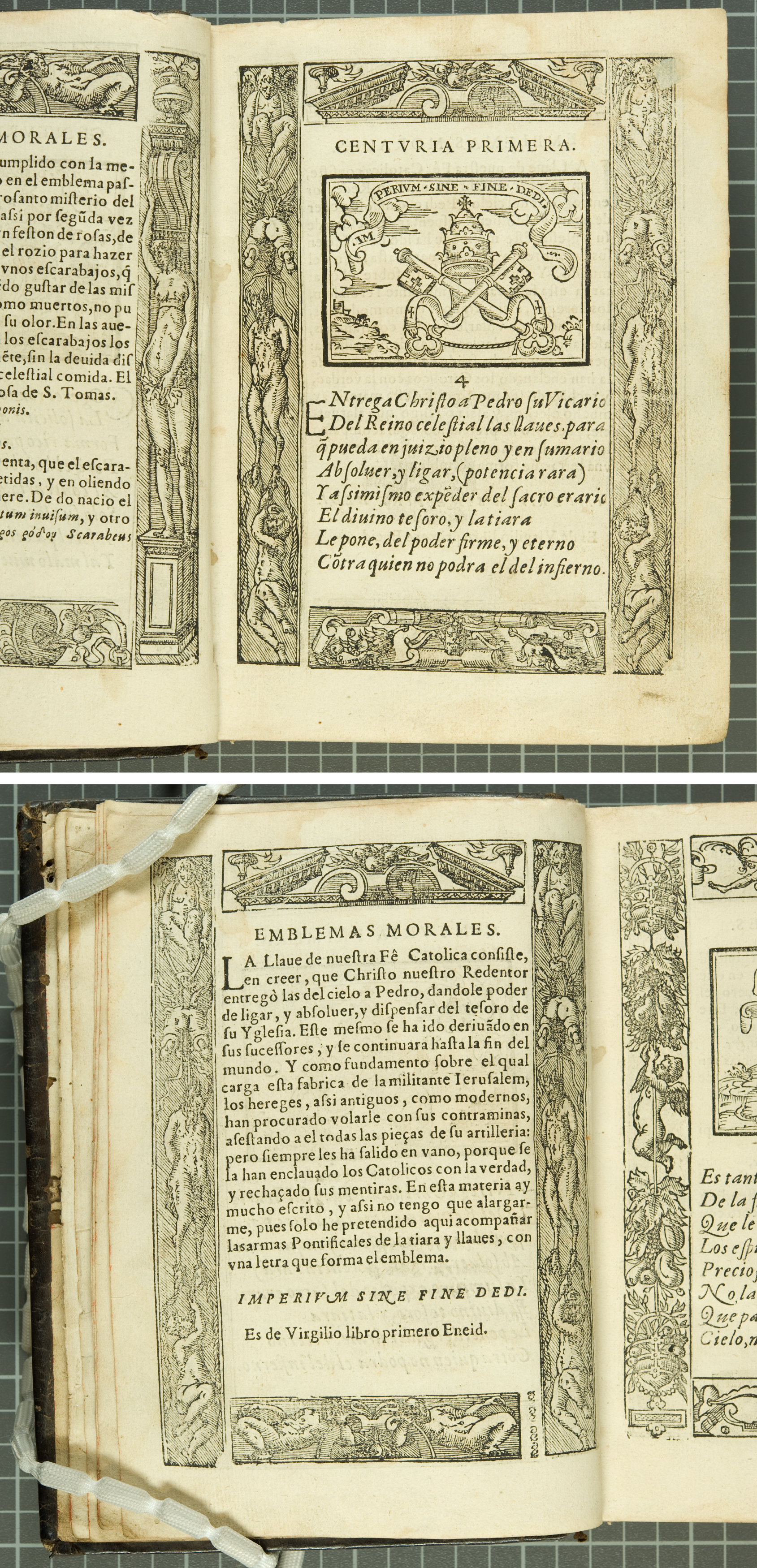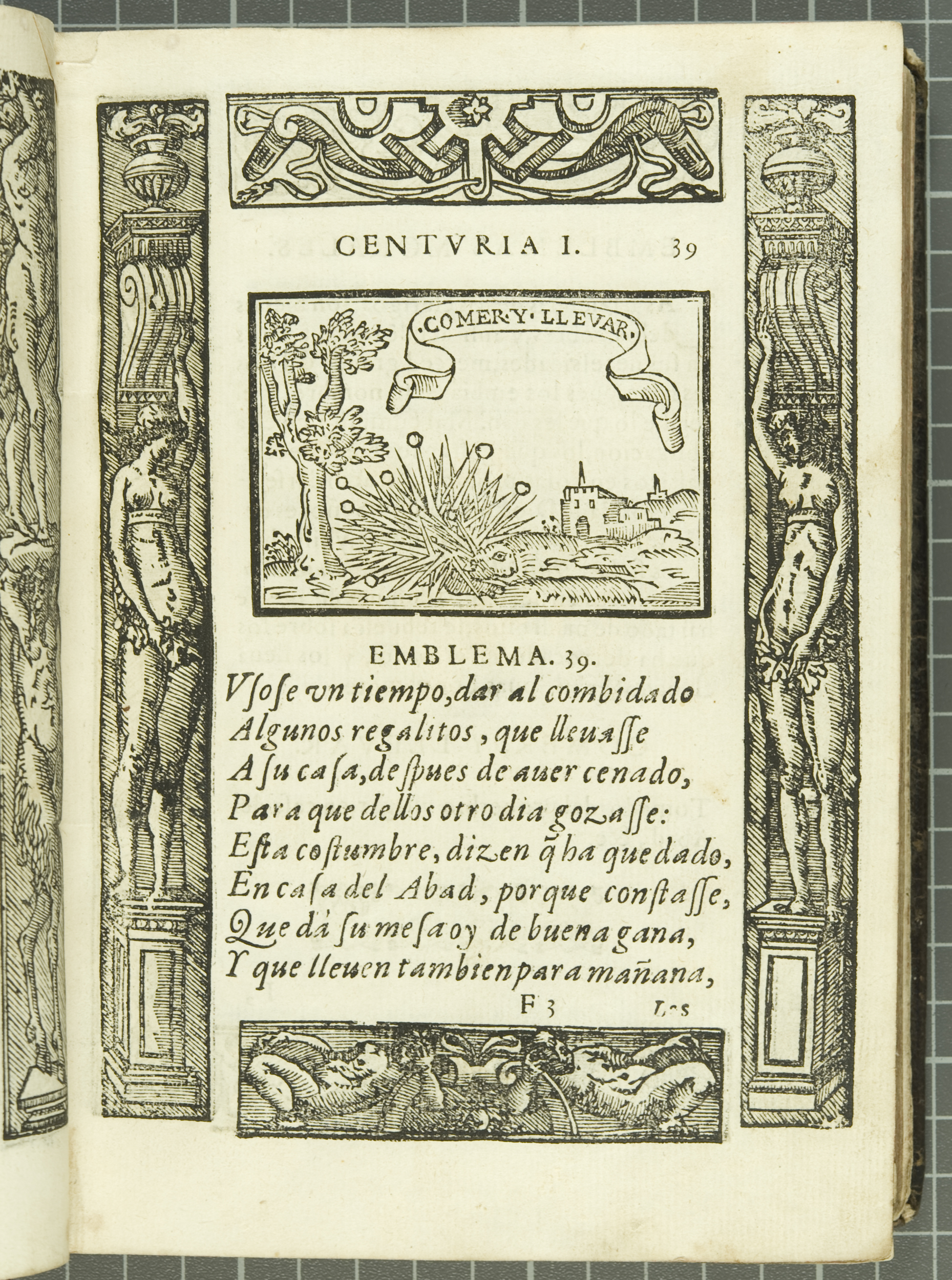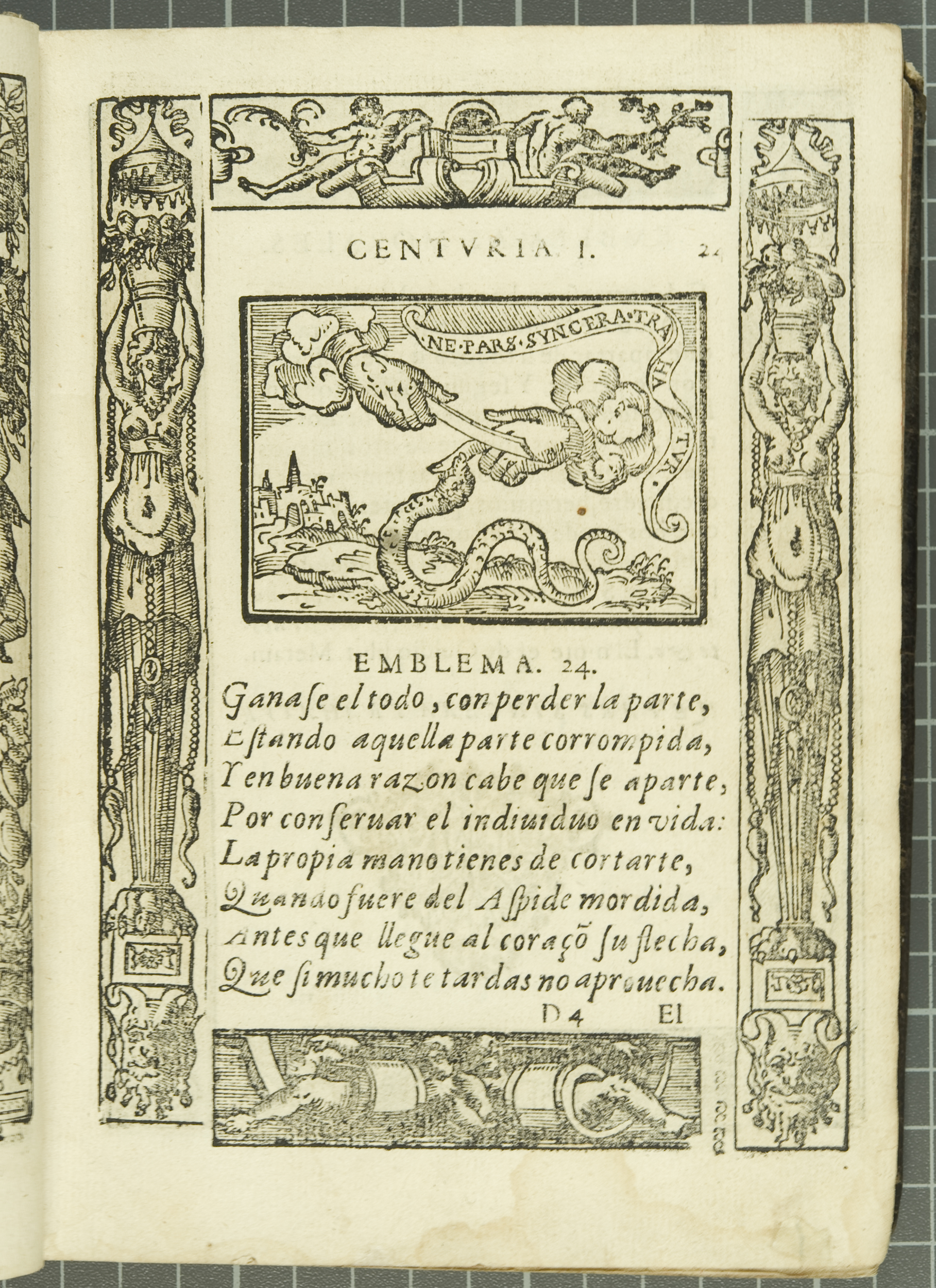52 Weeks of Inspiring Illustrations, Week 32: the emblem book of Sebastián de Covarrubias y Orozco (1610)

This week’s illustration post focuses on perhaps the most popular illustrated genre of the Renaissance: the emblem book. Emblem books were a genre developed in the early 16th century as digestible and curious works which combined an image, a motto and an explanatory text. This genre remained popular on the continent well into the 17th century, although, strangely, it never found any real footing in the U.K. The illustrations were most commonly woodcuts and the mottoes Latin, however Greek and vernacular mottoes were common as well.


The intention of most emblem books was to deliver a moral lesson through text and image, but often the connection between these two elements is obscure. There are many projects that have developed over the last decade to provide a digital repository for these books worth exploring (Emblematica Online [Univeristy of Illinois and Herzog August Bibliothek], University of Glasgow and the Emblem Project Utrecht are good examples).



Although St Andrews 17th century holdings remain largely unexplored, I did come across a wonderful example of a Spanish emblem book published at the height of the genre’s popularity. This week’s post features the emblems from Sebastián de Covarrubias y Orozco’s Emblemas morales (1610). This work was published under the direction of Don Francisco Gómez de Sandoval, 1st Duke of Lerma, shortly after Covarrubias had recovered from a serious illness. This is perhaps Covarrubias’s most popular publication on emblems, but he is most well-known for his Tesoro de la lengua castellana o española (1611).


From the beginning of this book it is quite obvious that the author’s roots, both as a canon in the Catholic Church and as a keen lexicographer, are quite influential. However, Covarrubias does stray off into the weirder and esoteric world of the emblem books of the day: dragons, serpents, snake-eating deer and oversized-tops (above, which look like the ship from Flight of the Navigator to this blogger). Covarrubias also draws on everyday scenes of fishermen and farmers toiling in the field to root this emblem book in the real-world.


I’ve sampled here some of my favourites from this book, however a full scan is available at Emblematica Online. This work was not Covarrubias’s first foray into the world of emblem books, in 1589 he published a work, also entitled Emblemas morales, which provides almost 100 pages worth of text about emblems and their origins and then provides 100 examples afterword (none of which are repeated in his 1610 work). This work was republished in 1604 with the same text but with new woodcuts.

Covarrubias’s 1610 Emblemas morales, however, is a completely new work, featuring new emblems and mottoes with shorter verse explanations.
–DG
Remember studying one of Covarrubia's emblems volumes for a History of the Spanish Language essay. Fascinating.
[...] This week’s illustration post focuses on perhaps the most popular illustrated genre of the Renaissance: the emblem book. Emblem books were a genre developed in the early 16th century as digestible ... [...]
“Stabit ut cunorum cadat” (motto unclear: can you help us translate this?) - I assume this was answered 11 years ago, but anyway...I can't construe cunorum (cuneorum perhaps?) but the image is a caltrop or horse-crippler, which always lands on three of its points with the fourth pointing straight upwards, and the motto is presumably some variant of the phrase "whichever way you throw me, I will stand".
“Stabit ut cunorum cadat” (motto unclear: can you help us translate this?) - I guess this was answered 11 years ago, but anyway...The image is a caltrop or horse-crippler with four equidistant points such that however it is thrown it stands on 3 points with one pointing straight up, and the motto is probably some variant of the phrase "whichever way you throw me, I will stand".